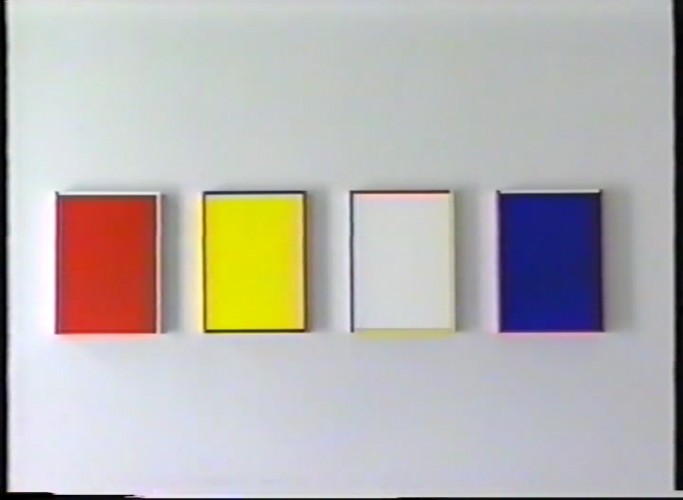Imi Knoebel was born as Klaus Wolf Knoebel in 1940 in Dessau. From 1962–64 he studied at the Darmstadt Werkkunstschule, in a course based on the ideas of the pre-Bauhaus course taught by famous artists Johannes Itten and László Moholy-Nagy. Shortly after Knoebel started attending the Kunstakademie Düsseldorf, in a class run by a Joseph Beuys. Together with Blinky Palermo (with whom he shared a studio), Katharina Sieverding and several others, he grew as an artist and over the course of years has decisively established the notable career.
The explorations of intense relations between different pictorial elements occupied Imi Knoebel greatly and made him one of the burgeoning European abstract artists of the post-war period. The lessons learned from the avant-garde helped him a lot in finding the perfect balance in perusing his own vision. Nevertheless, Knoebel extends reduction principles in a different or extended manner; the forms are not being only simplified for aesthetic order, rather they become tools for implementation of the mental order. Highly conceptual works reveal the artists’ apparent need for contemplation and spiritual comfort and can be perceived as certain modules for transgression.
In 1968 Knoebel created his first major work, an installation with a variety of geometrical objects called Raum 19, named after classroom No. 19, which Beuys had given to his students at the academy. In the years between 1969 and 1973/75, Knoebel produced first of his large series which were executed on DIN A4 sheets titled Linienbilder. In the mid-1970s on, the artist was dazzled with a gestural use of color on layered plywood boards or metal plates, while from 1975 to date he has been working on overlapping colored rectangles called Mennigebilder (“Red Lead Pictures”). Whereas in his early years his palette was reduced to white, black, and brown, since 1977 he has been producing works with more color.
The artistic agenda of Imi Knoebel is based on the explorations, style and formal reminiscent of the high modernist principles of both Suprematism and the Bauhaus. The artist consistently applied a radical reduction of form from the beginning of his artistic career, starting with linear paintings. The plunge into the abstract was then extended by the color field images, which have formed the core of his work up to this day. By examining the metaphysical aspects of the concepts of time and space, Knoebel focused mostly on the most obvious shape, the square, with which he invoked his first impression of art, the Black Square by Kasimir Malevich.
The domains of Imi Knoebel’s art are of great importance, not only in the purely artistic sense but rather in historical. Over the years the artist has shown his works in various solo and group exhibition, not to mention the large number of pieces held in numerous public collections spanning from The Museum of Modern Art in New York City, over Albertina in Vienna to Malmö Konsthall in Sweden. Although known for his minimalist and abstract works, Imi Knoebel always takes as further, and almost as a prophet introduce us with the most pressing and fundamental questions of painting and the visual arts in general.


